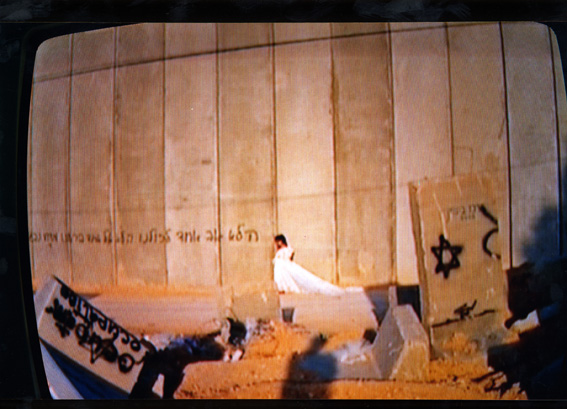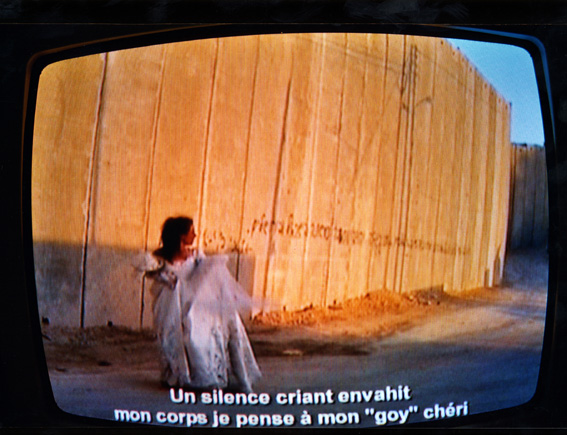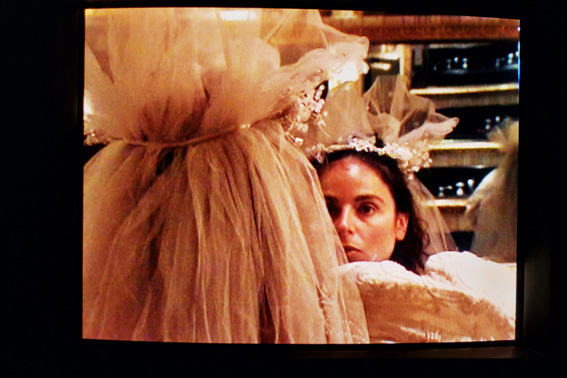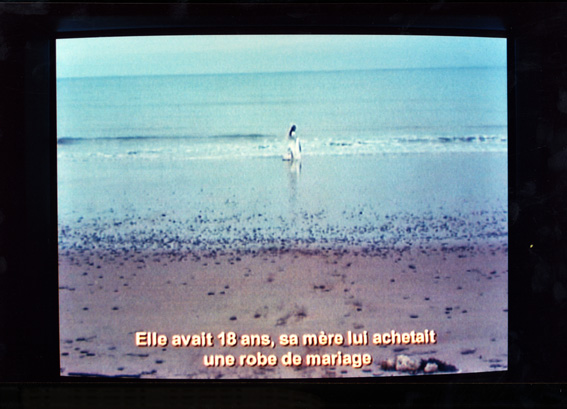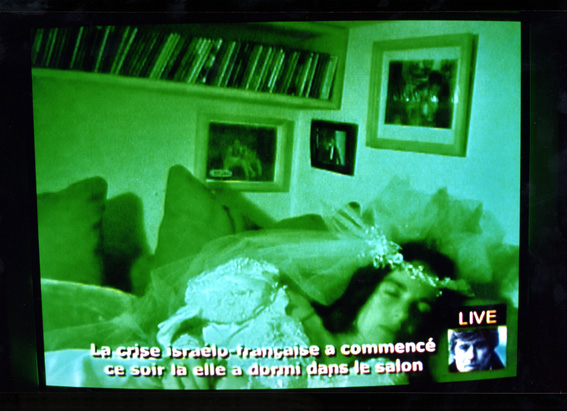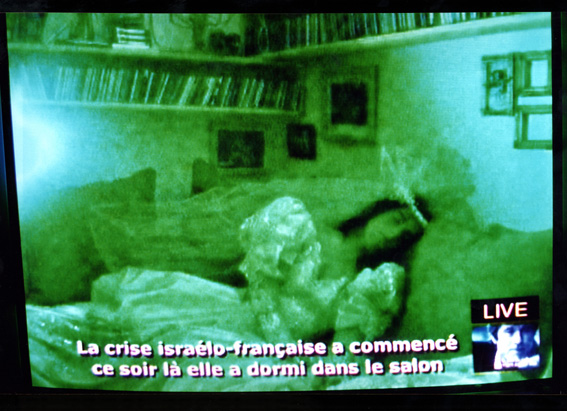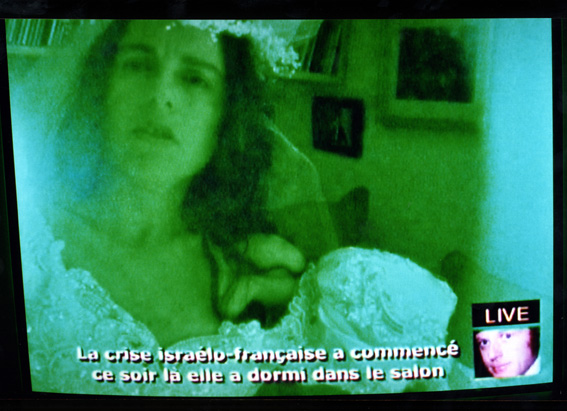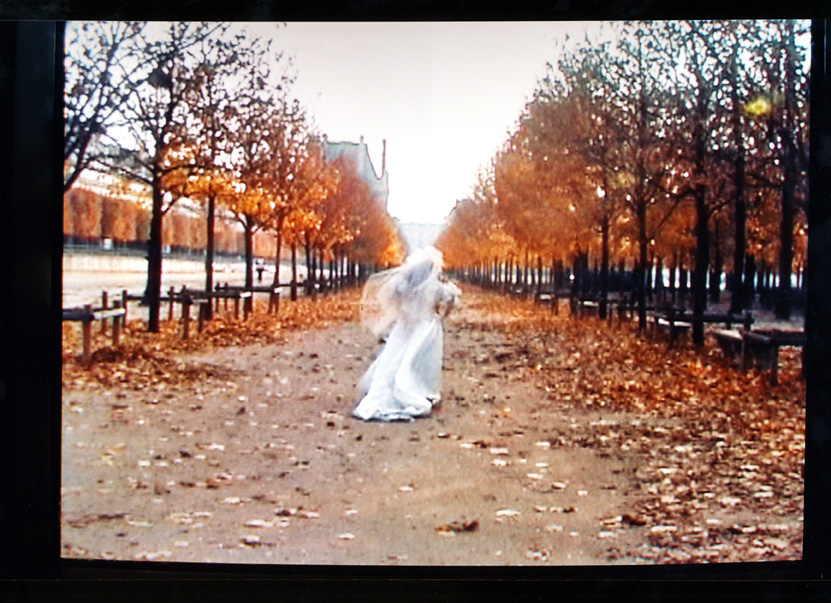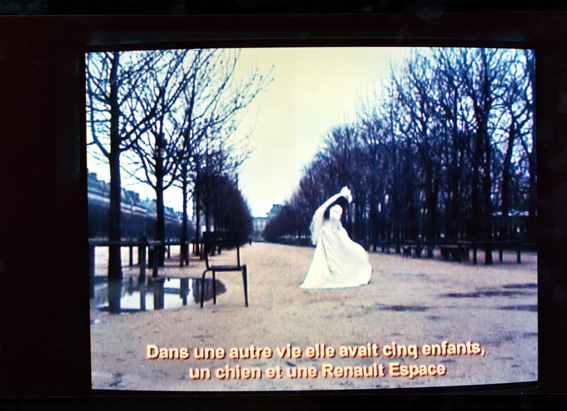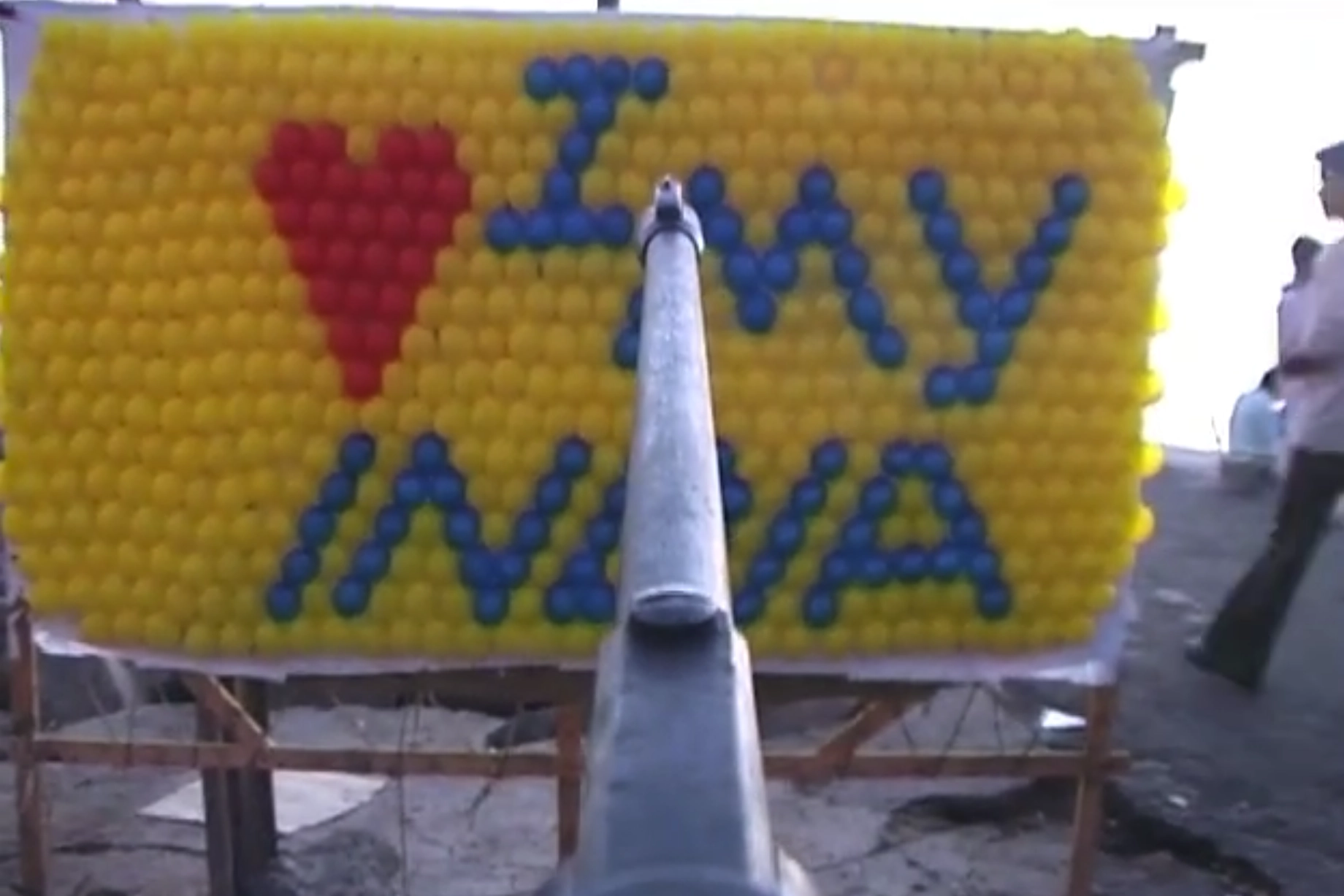It all started with a wedding dress.
My mother bought it for me twelve years ago.
This was not as part of a tradition. She had just felt like buying it.
Ever since the dress has been in our family wardrobe and never been taken out nor tried on.
In parallel, there was a short film of my parents’ wedding in the seventies.
It was shot with a 16 mm camera that was put on VHS format.
We sometimes watch it when we celebrate Shabbat with the family.
Those images are universal and intimate at the same time.
Those images were memorised by my body.
Existence and non-existence of this dress; my desire-refusal to marry; subjective obsession for happiness…
In spite of the distance, (I live in Paris and my family is Israel) I decided to take the dress out of the family wardrobe…
Through the true story of the wedding dress my mother gave on my eighteenth birthday, I am confronting my own personal history with the views of society on the role of women inside the wedlock.
Through photography, I express the relationship between the wedding dress and the woman.
I find this relationship mysterious.
The legend of a princess / a woman dressed in white. It is a clich? that I love to hate and that I am dying to discover through visual art.
This work –that goes beyond the limits of art – confronts collective memory with everyday life. My project develops through various stages and means of expression.
IMAGES OF WOMEN… PALESTINE / ISRAEL…
I am a female artist and I deliberately chose to move to France where I have been living for eight years. After spending 26 years in my country of origin which I’d rather call Israel/Palestine, I suddenly felt the need to leave my country and my roots and escape from a land that was “burning” under my feet.
Because I have left, I have stopped feeling affected physically and morally by the situation in my country. No one can impose a national identity on me or a specific identity as I am no longer subject to Israeli identification.
I have become what I am today: a female artist who enjoys freedom of thought according to her own values.
I have been searching for a specific identity, a personal pursuit that would relate to my life as an artist and become my main source of inspiration and art work. Through my work I intend to go beyond the boundaries “between me and the others”.
In the continuity of my previous work, “ The Wedding Dress” – which included a trip to Palestine and an encounter with a Palestinian female artist- I started writing on this project.
“The Wedding Dress” was also about a first encounter with a Palestinian woman; the first confrontation with a Palestinian woman and “the other culture” with its different languages, history and aspirations but at the same time our two histories were reflecting each other. They are so close and so much alike.
When I met that woman I had the strange feeling that she could help me find the answers to all my existential questions on the “burning land”.
I wanted to meet that woman in spite of the wall that stood between us; what was “behind the veil”. Through that woman I wanted to discover my own face and skin.
I had hoped that the wall would become a meeting place between me and other people; a boundary that would denounce some sort of plurality, a paralysed identity that is sick on one side. The Palestinian woman and I as an Israeli woman are free and far away from each other. The wall would establish a link between the two of us.
